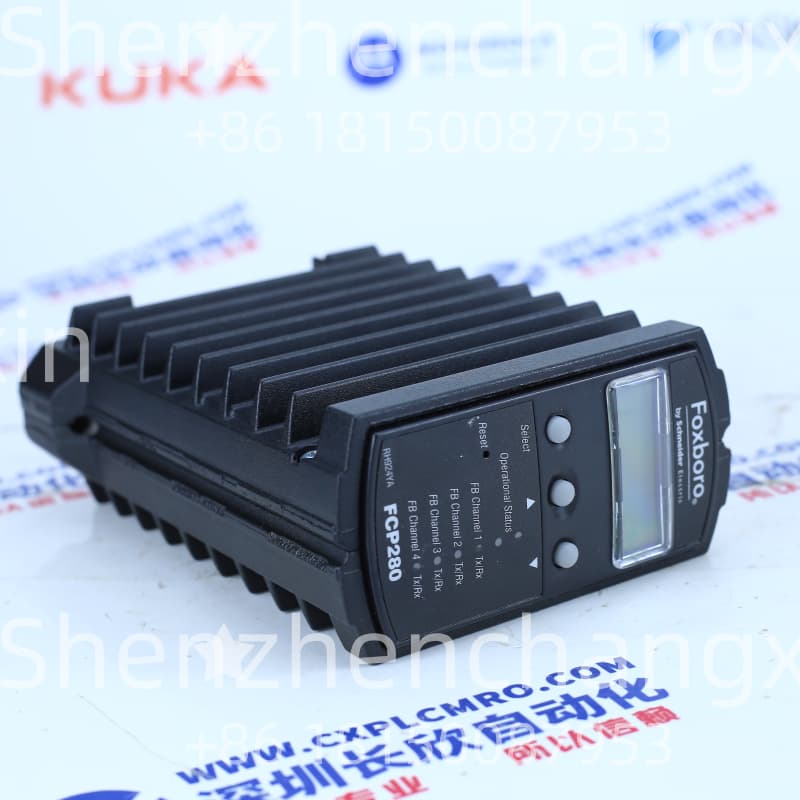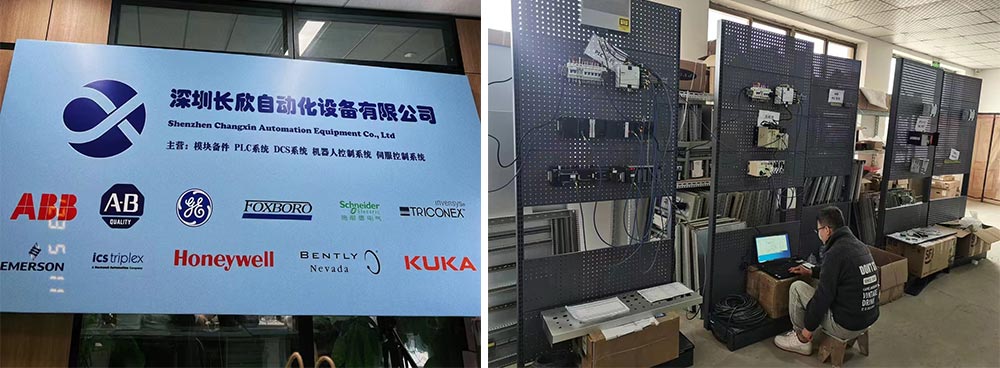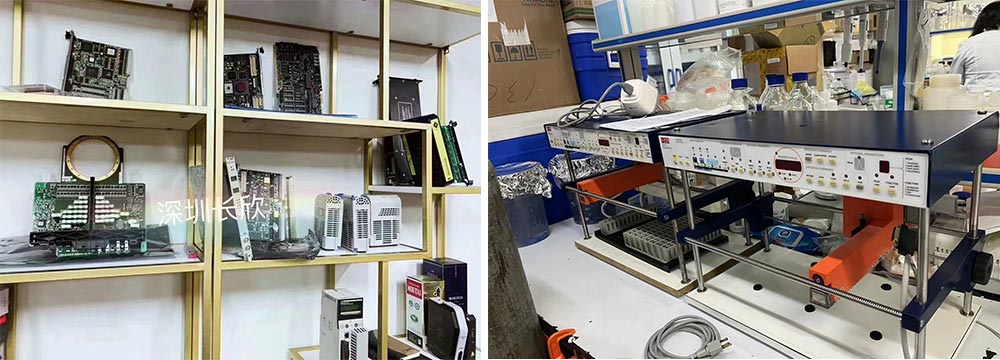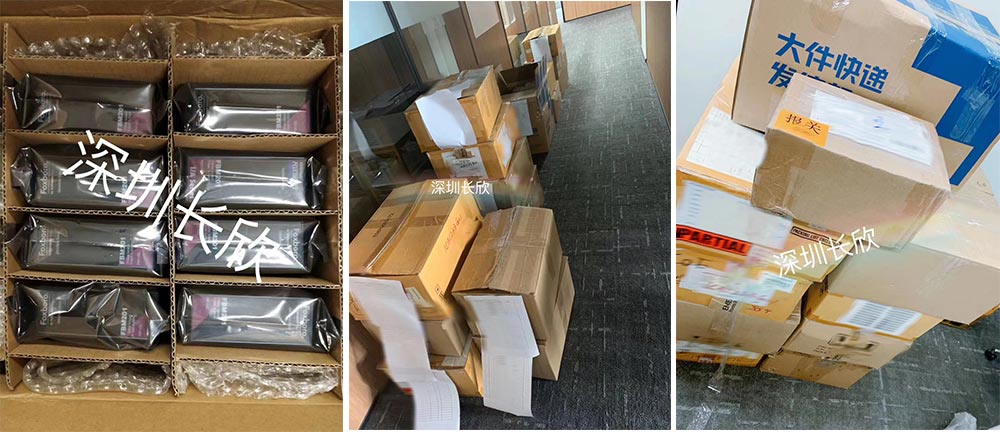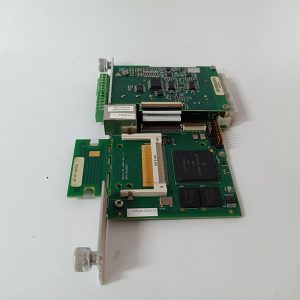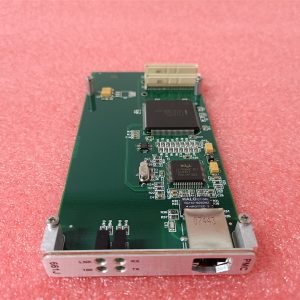Description
 FOXBORO FCP280 Product Overview
FOXBORO FCP280 Product Overview
The FOXBORO FCP280 is the”field control core unit”designed by Foxboro for the I/A Series®DCS.In large-scale industrial processes,it acts as an”intelligent hub connecting sensors and actuators.”It collects real-time data from field devices(such as reactor temperature,pipeline pressure,and valve opening)via the FBM I/O bus,while executing pre-set control logic(PID control and safety interlocks),calculating control commands,and then issuing them to actuators(such as control valves and frequency converters)to ensure that process parameters remain stable within set ranges.
The FOXBORO FCP280 plays a crucial role in petrochemical atmospheric and vacuum distillation units!These units require simultaneous control of 20+PID loops(such as furnace outlet temperature,tower top pressure,and side draw volume),requiring each loop to respond quickly and achieve high accuracy.Temperature deviations exceeding 1°C can result in substandard product quality.The FOXBORO FCP280 can process these loops in parallel:It collects the furnace temperature(4-20mA signal)via the FBM analog input module,calculates it using a PID algorithm,and outputs a 4-20mA signal to control the fuel valve opening.Simultaneously,a logical interlock determines that if the temperature exceeds 400°C,the fuel valve will be immediately closed and an alarm will be issued.Using this system,a refinery reduced the temperature control deviation of its atmospheric and vacuum unit from±0.8°C to±0.1°C,increased product qualification by 3%,and reduced shutdowns due to parameter fluctuations by one per year.
More importantly,the FOXBORO FCP280 supports 1:1 hot redundancy configuration—while the primary processor is operating,the backup processor synchronizes data in real time.If the primary processor fails(e.g.,due to communication interruption or hardware failure),the backup processor automatically takes over control within 100ms.This ensures a seamless process with no disruption to production.The boiler feedwater control system of a large thermal power plant employs this configuration.Even in the event of a main processor failure,the boiler water level remains stable at the set value(±5 mm),preventing serious safety incidents such as”boiler dry-burning due to low water level.”
Main Features and Advantages
1.Superior Control Capabilities,Multi-Task Parallel Operation,and No Lag
The FOXBORO FCP280,equipped with a 32-bit industrial-grade ARM processor,can simultaneously process 1024 I/O signals,256 PID loops,and 10,000 logic control steps.Even complex cascade PID control(such as reactor temperature-jacket cooling water flow)can be controlled with a response time of less than 50ms.A chemical company’s polymerization reactor control project required simultaneous monitoring of four parameters:temperature,pressure,agitator speed,and feed flow rate.The system also implemented 12 interlocking logics,including”overpressure→automatic pressure relief”and”temperature exceeding a limit→feed stop.”The FOXBORO FCP280 easily handled these requirements,operating without a single control delay for six months.In contrast,the previous controller occasionally experienced an interlocking action lag of 0.5 seconds,posing a safety hazard.
2.Hot Redundancy Design:Zero Interruption in Production
The FOXBORO FCP280’s 1:1 hot redundancy is a safety guarantee for large-scale industry.The primary and standby processors exchange data(including process data,control parameters,and fault status)in real time via a dedicated synchronization line.When the primary processor is operating normally,the standby processor operates in”hot standby”mode.If the primary processor fails(e.g.,due to power outage or communication failure),the standby processor immediately switches to primary mode,taking over all control tasks.The switchover time is less than 100ms,and field actuators(such as control valves)experience zero operational fluctuations.A natural gas processing plant’s desulfurization unit used redundant FOXBORO FCP280s.A failure in the main processor power module triggered a failover.During the entire process,no alarms were reported to the operator station,and production continued normally,avoiding downstream gas supply shortages caused by natural gas processing interruptions.
3.Strong compatibility and expandability,seamless integration between new and existing systems
The FOXBORO FCP280 is fully compatible with the I/A Series®DCS.It supports not only the latest I/O modules,such as the FBM201(digital input)and FBM202(analog output),but also the older FBM100 series modules.This allows existing plants to upgrade without replacing all I/O devices;they can simply replace the old controller.Furthermore,it supports mainstream industrial protocols such as Modbus TCP and EtherNet/IP,enabling easy connection to third-party devices such as Siemens inverters and Yokogawa flow meters.In a DCS upgrade project at an old power plant,the FOXBORO FCP280 replaced a 2005 controller,retaining the existing FBM107 analog input module and third-party water level gauge.This reduced upgrade costs by 40%and shortened the commissioning cycle from 15 days to 7 days.
4.Functional Safety Certification,Reliable in Hazardous Scenarios
The FOXBORO FCP280 is IEC 61508 SIL 2 certified,making it suitable for safety interlock control in hazardous scenarios such as chemical explosion-proof areas and high-temperature,high-pressure power plant environments.For example,in a chemical plant’s reactor overpressure interlock,if the pressure transmitter detects a pressure exceeding 1.2 MPa,the FOXBORO FCP280 immediately triggers the interlock logic:closing the feed valve,opening the pressure relief valve,and issuing an alarm.The entire process responds in less than 50ms,fully meeting SIL 2 safety requirements.After using it,a styrene plant in an explosion-proof zone successfully avoided two potential explosions caused by overpressure,significantly improving safety.
Application Areas
The FOXBORO FCP280 is used in large-scale industrial scenarios with extremely high control precision and safety requirements,making it a core component of process control.
In the petrochemical industry,it serves as the”control brain”of atmospheric and vacuum distillation and catalytic cracking units.For example,a catalytic cracking unit requires control of over 30 key parameters,including furnace temperature(480°C±0.5°C),regenerator pressure(0.15 MPa±0.01 MPa),and product separation column liquid level(50%±2%).The FOXBORO FCP280 collects these parameters through the FBM I/O module,implementing cascaded PID control and safety interlocks(e.g.,”Regenerator temperature exceeds 700°C→fuel shut-off”)to ensure stable plant operation.After using it,a refinery extended the operating cycle of its catalytic cracking unit from 300 days to 450 days,reducing one major overhaul annually and saving over 2 million yuan.
The power industry’s thermal power plant boiler control system relies on it!Thermal power plant boilers must simultaneously control three core circuits:feedwater flow(to maintain water level),fuel quantity(to control steam temperature),and air flow(to ensure combustion efficiency).These circuits require”water level deviation<±5mm,steam temperature deviation<±1°C.”The FOXBORO FCP280 utilizes”three-impulse feedwater control”logic(combining water level,feedwater flow,and steam flow)to precisely adjust the feedwater valve opening.Simultaneously,it uses PID control to adjust the fuel valve and air blower to ensure adequate combustion.Using it,a thermal power plant has improved boiler water level control accuracy from±8mm to±3mm,steam temperature fluctuations to<±0.5°C,and turbine power generation efficiency by 0.3%,generating an additional 800,000 kWh of electricity annually.
In the water treatment industry,it serves as the”process control core”of sewage treatment plants.The anaerobic-aerobic(AO)process for wastewater treatment requires controlling the pH of the anaerobic tank(7.0±0.2),the dissolved oxygen(DO)of the aerobic tank(2-4 mg/L),and the sludge return ratio(50%-100%).The FOXBORO FCP280 collects signals from pH sensors and dissolved oxygen meters,using PID control to regulate the dosing pump(for pH control)and the aeration fan(for DO control).Sequential control(SFC)also enables alternating operation of the sludge return pump.Using this system,a municipal wastewater treatment plant has stabilized its effluent COD(chemical oxygen demand)below 30 mg/L(meeting discharge standards),reduced dosing by 15%,and saved 120,000 yuan in chemical costs annually.
Selection Guide/Purchasing Recommendations
There are four key points to consider when choosing the FOXBORO FCP280.Choosing the wrong one can lead to insufficient control capabilities or wasted costs.Exercise caution!First,select a model based on the number of I/O points and control loops:First,calculate the number of I/O points(digital+analog)and PID loops required for on-site data collection.If the number of I/O points is≤512 and the number of PID loops is≤128,a single FOXBORO FCP280 is sufficient.If the number of points exceeds 512 or the number of loops exceeds 128,it is recommended to use two processors for zone control(e.g.,one for the reaction zone and one for the distillation zone)to avoid response delays caused by excessive load on a single unit.A chemical company overestimated the control capabilities of a single processor and used a single processor to handle 800 I/O points,resulting in a data sampling delay of 0.5 seconds.This issue was resolved by using two separate processors.Second,redundant configurations are essential for hazardous scenarios.For safety-critical environments,such as explosion-proof areas(e.g.,chemical reactors)and high-temperature,high-pressure areas(e.g.,power plant boilers),1:1 hot redundancy(two FOXBORO FCP280s)is essential to prevent production interruptions caused by a single unit failure.For common scenarios(e.g.,general water treatment)where short downtime(less than 1 hour)is permitted,a single unit configuration can be used to reduce costs.However,from a safety perspective,redundancy is recommended for large-scale industrial scenarios.
Third,confirm DCS system version compatibility:The FOXBORO FCP280 only supports I/A Series®DCS versions V9.0 and above.If the DCS version of the existing plant is lower than V9.0,the system software must be upgraded before using this processor.Otherwise,”communication protocol incompatibility”will occur(e.g.,inability to recognize the FBM I/O module).Before purchasing,be sure to provide the DCS system version number to the supplier to confirm compatibility.Fourth,avoid buying”non-genuine”FOXBORO FCP280s on the market(such as refurbished or assembled modules)may have issues like reduced memory and redundancy failure.A power plant purchased a refurbished module,and after three months of operation,the redundant synchronization cable failed,preventing active/standby switching.This caused boiler water level fluctuations exceeding 20mm and nearly caused an accident.Purchase exclusively through authorized FOXBORO distributors,and request the original factory inspection report and SIL 2 certification documents to ensure authenticity.
During installation,please note the following:①On-site commissioning must be performed by a FOXBORO certified engineer(synchronization and PID parameters for redundant configurations require professional calibration);②Maintain a temperature within the control cabinet between 0-40°C(exceeding 60°C triggers the processor overheat protection);③Use dual power supplies(two 24V DC lines)to prevent downtime caused by a single power supply interruption;④The bus cable to the FBM I/O module must not exceed 100 meters in length;if it exceeds this,a signal amplifier must be added.Frequently Asked Questions(FAQs)
Q:In a FOXBORO FCP280 redundant configuration,will control parameters be lost after a master/slave switchover?A:No!Redundant FOXBORO FCP280s synchronize all parameters(including PID parameters,logic control programs,and process data)in real time via a dedicated synchronization line(redundant data bus).During a master/slave switchover,the backup processor is fully loaded with all parameters,ensuring smooth control and no parameter loss.A refinery conducted a switchover test and found that the reactor temperature remained stable within±0.1°C of the setpoint after the switchover,without any fluctuation.
Q:The FCP280 fails to recognize the FBM I/O module and displays”Module Communication Failure.”How can I troubleshoot this?A:There are three steps to troubleshoot!First,check the FBM I/O bus connection:Confirm that the processor’s FBM bus interface and the I/O module’s bus cable are in good contact(unplug and replug the cable once)and check for bent pins(use a magnifying glass to inspect).Second,check the I/O module power supply:The FBM module requires a separate 24V DC power supply.Measure the supply voltage to ensure it is within 24V±10%.Insufficient voltage can cause the module to not communicate.Third,check the module address:Access the DCS engineering station and confirm that the FBM module address(for example,set the FBM201 address to 1)matches the processor’s configured address.A mismatch will result in recognition failure.
Q:During operation,the FCP280’s PID control accuracy has decreased,with the temperature deviation decreasing from±0.1°C to±0.5°C.How can I resolve this?A:This is most likely caused by PID parameter drift or interference.First,log in to the engineering station and recalibrate the PID parameters(proportional P,integral I,and differential D).For example,for temperature control,increase the P value(to enhance response)and decrease the I value(to reduce overshoot).Next,check the analog input signal:Use a multimeter to measure the stability of the 4-20mA sensor output signal(fluctuations exceeding 0.1mA will affect accuracy).If fluctuations are large,check the sensor grounding(single-ended grounding)and the shielding cable(connect the shield to the control cabinet grounding bar)to filter out interference.Finally,check the actuator(such as a control valve)for any sticking.A sticking condition can prevent accurate control command execution and require on-site valve repair.
Q:Does the FCP280 support third-party instrument integration,such as Siemens pressure transmitters?A:Yes!Third-party instruments(such as Siemens and Yokogawa transmitters and flow meters)can be connected via the FCP280’s RS485 interface(Modbus-RTU protocol)or Ethernet interface(Modbus TCP protocol).Steps:①In the”Communication Configuration”section of the DCS engineering station,add the Modbus address and register address of the third-party instrument(e.g.,pressure valuesare stored in register 40001);②Connect the instrument’s 4-20mA signal to the FBM analog input module(or read the data via communication);③When programming the control logic,simply call the Modbus data register.A factory previously used this method to connect a Siemens pressure transmitter,achieving stable data reading with no packet loss.
Related Products
FOXBORO FBM201:Digital Input Module(16-channel,24V DC),a core I/O component for the FCP280,used to collect field switch signals(such as pump start/stop and valve status).
FOXBORO FBM202:Analog Output Module(8-channel,4-20mA),used with the FCP280 to output control signals to drive control valves and inverters.FOXBORO FBM207:Analog input module(8 channels,4-20mA/RTD),used to collect continuous signals such as temperature and pressure,and provide process data to FCP280.
选择深圳长欣,选择放心,售后无忧 大量现货,当天顺丰发货!!!

 WhatsApp:+86 18150087953 WeChat: +86 18150087953
WhatsApp:+86 18150087953 WeChat: +86 18150087953  Email:
Email:
